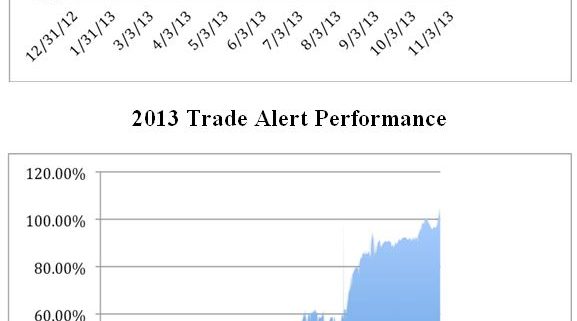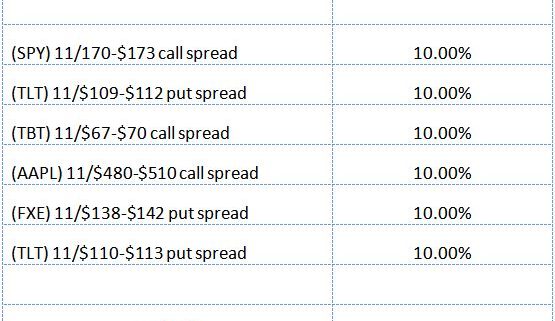I sit here painfully typing this letter, as my fingertips have been worn down to bloody stumps. I have been pounding out the Trade Alerts since the month started, sending out 37, and the month is only half over. That works out to a 3.3636 Trade Alerts a day!
I have been so busy that I literally haven?t had time to eat, living entirely on black coffee, and losing three pounds since November 1. Maybe I should go into the weight loss business. I hear it?s more profitable than this financial stuff.
Not only have I worked myself to the bone, my staff is rapidly wearing out as well. Everyone is taking a well-earned rest this weekend, melting a few ice cubes along the way.
Still, you don?t get market melt ups like this very often in life. You have to strike while the iron is hot, make hay while the sun shines, and carpe diem. Usually I warn investors that if they ?invest in haste, they will repent at leisure.? In this market it?s the opposite. Invest at leisure, repent with haste.
Still, it?s all worth it when it?s working. Including both open and closed trades, the last 18 consecutive Trade Alerts have been profitable. I am rapidly closing in on an old record of 25 successful Trade Alerts, made earlier this year.
The Global Trading Dispatch service of the Mad Hedge Fund Trader is now up 56.4% in 2013. The November month to date record is now an enviable 11.92%.
The three-year return is an eye popping 111.43%, compared to a far more modest increase for the Dow Average during the same period of only 30%.
That brings my averaged annualized return up to 38.2%.
This has been the profit since my groundbreaking trade mentoring service was launched 35 months ago. These numbers place me at the absolute pinnacle of all hedge fund managers, where the year to date gains have been a far more pedestrian 3%. I predict the arrival of a lot more job seekers on Craig?s List in January.
I took profits on all of my extensive shorts in the Treasury bond market, taking advantage of the sudden back up in ten-year yields from 2.47% to 2.77%, the sharpest move of the year. I then reloaded on the first 9 basis point back up in yields
I then bet that the stock market would continue another tedious sideways correction going into the Thanksgiving holidays. I bought an in the money put spread on the S&P 500, and then bracketed the index through buying an in the money call spread. Both of these expired profitably on Friday.
I then took advantage of the weakness to add another long in the Industrials ETF (XLI), a rifle short at one of the best performing sectors of the market. I piled on more shorts in the Japanese yen (FXY), (YCS), believing that the Bank of Japan will have to accelerate its monetary easing program to deal with an economic slowdown. I also caught the China recovery play by going long the Australian dollar (FXA).
This is how the pros do it, and you can too, if you wish.
Carving out the 2013 trades alone, 74 out of 89 have made money, a success rate of 83%. It is a track record that most big hedge funds would kill for.
My esteemed colleague, Mad Day Trader Jim Parker, has also been coining it. He caught a spike up in the volatility index (VIX) by both lapels. He also was a major player on the short side in bonds, to the delight of his many followers.
The coming winter promises to deliver a harvest of new trading opportunities. The big driver will be a global synchronized recovery that promises to drive markets into the stratosphere in 2014. The Trade Alerts should be coming hot and heavy. Please join me on the gravy train.
Global Trading Dispatch, my highly innovative and successful trade-mentoring program, earned a net return for readers of 40.17% in 2011 and 14.87% in 2012. The service includes my Trade Alert Service and my daily newsletter, the Diary of a Mad Hedge Fund Trader. You also get a real-time trading portfolio, an enormous trading idea database, and live biweekly strategy webinars. Upgrade to Mad Hedge Fund Trader PRO and you will also receive Jim Parker?s Mad Day Trader service.
To subscribe, please go to my website at www.madhedgefundtrader.com, find the ?Global Trading Dispatch? box on the right, and click on the lime green ?SUBSCRIBE NOW? button.















